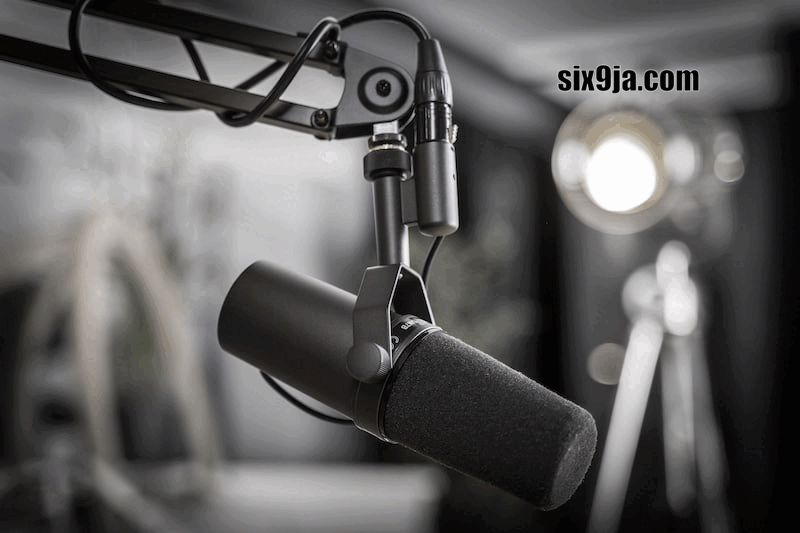I’m going to tell you 10 things a recording studio needs. I will preface this by saying that the 10 things I’m going to tell you are absolute essentials. If you’re planning on setting up a recording studio, it’s important to ensure that you have all the necessary equipment to produce high-quality recordings. From microphones to monitors, each piece of equipment plays a crucial role in capturing the best sound possible. Without further ado, let’s dive into the 10 essentials that every recording studio needs.
1. A computer: The first and foremost essential for any recording studio is a computer. It is the heart of your studio and serves as the central hub for all your recording and editing needs. Whether you’re using a Mac or a PC, make sure it has sufficient processing power and memory to handle the demands of recording software and plugins. A fast and reliable hard drive is also essential for storing and accessing your audio files. In addition, you’ll need digital audio workstation (DAW) software to record, edit, and mix your tracks. There are many options available, from industry-standard programs like Pro Tools and Logic Pro to more affordable options like Reaper and Ableton Live. Do your research and choose the one that best suits your needs and budget.
2. Audio Interface : An audio interface is a device that connects your computer to your studio monitors, microphones, and other audio equipment. It converts analog audio signals into digital data that can be processed by your computer, and vice versa. Make sure to choose an interface with high-quality preamps, converters, and low-latency performance for the best sound quality and minimal lag. There are many options available at different price points, so consider your needs and budget when making your choice. Some popular options include the Focusrite Scarlett series, Universal Audio Apollo, and Presonus Studio series.
3. Microphones: Choosing the right microphone(s) for your recording needs is crucial for capturing high-quality audio. There are many types of microphones you want to capture, as well as the environment you will be recording in, when selecting a microphone. Condenser microphones are great for capturing detailed and nuanced sounds, while dynamic microphones are better suited for loud sources like drums or guitar amps. Ribbon microphones are known for their warm and natural sound, making them a popular choice for recording vocals and acoustic instruments. It’s also important to consider the polar pattern of the microphone, which determines the directionality of the sound it picks up. Omnidirectional microphones capture sound from all directions, while cardioid microphones are more directional and pick up sound primarily from the various types of microphones available, including condenser, dynamic, and ribbon microphones, each with their own strengths and weaknesses. Consider the sound you want to achieve and the environment you will be recording in when selecting a microphone. Don’t forget to also consider the polar pattern of the microphone. With the right microphone, you can capture high-quality audio that accurately represents the sound you want to record.
4. Headphones: Another important piece of equipment for recording audio is headphones. They allow you to monitor the sound being recorded in real-time and make adjustments as needed. Closed-back headphones are ideal for recording because they block out external noise and prevent audio bleed, while open-back headphones are better for mixing and mastering because they provide a more natural and spacious sound. It’s also important to consider the frequency response of the headphones, as this can affect how accurately you hear the audio being recorded. Overall, investing in a good pair of headphones can make a big difference in the quality of your recordings.
5. Studio Monitors : In addition to headphones, studio monitors are another important tool for recording audio. Unlike headphones, which can sometimes mask certain frequencies, studio monitors provide a more accurate representation of the sound being recorded. They also allow you to hear the stereo image of the audio, which is important for mixing and mastering. When choosing studio monitors, it’s important to consider the size of your recording space and the type of music you’ll be recording, as this can affect the size and power of the monitors you need. With the right combination of headphones and studio monitors, you can ensure that your recordings sound great on any playback system.
6. Cables: Another important aspect to consider when recording audio is the quality of the cables you use. Poor quality cables can lead to unwanted noise and interference, which can greatly affect the overall quality of your recordings. It’s important to invest in high-quality cables that are shielded and have a low capacitance, as this will help reduce noise and interference. Additionally, it’s important to make sure that your cables are the appropriate length for your recording setup, as longer cables can also introduce unwanted noise. By paying attention to the quality and length of your cables, you can ensure that your recordings are as clean and clear as possible. Overall, investing in high-quality equipment and paying attention to the details can greatly improve the quality of your recordings and help you achieve professional-level results.
7. Microphone stand: Another important piece of equipment to consider is the microphone stand. A sturdy and adjustable stand can make a big difference in the quality of your recordings. A stand that is too flimsy or unstable can cause unwanted vibrations and movements, resulting in a distorted or unclear sound. It’s also important to choose a stand that is adjustable, so you can position the microphone at the right height and angle for optimal sound capture. There are a variety of microphone stands available, from desktop models to floor stands, so be sure to choose one that suits your recording needs. By investing in a high-quality microphone stand, you can ensure that your recordings are stable and free from unwanted noise or distortion, resulting in a more professional and polished final product.
8. A pop filter: Another important accessory to consider is a pop filter. This simple piece of equipment can make a big difference in the clarity of your recordings by reducing unwanted popping and sibilance sounds caused by fast-moving air hitting the microphone. A pop filter is a mesh screen that is placed between the microphone and the speaker, and it works by diffusing the air and preventing it from hitting the microphone directly. This can result in a smoother and more natural sound, especially when recording vocals or spoken words. Pop filters come in various shapes and sizes, so be sure to choose one that fits your microphone and recording setup.
9. Shock mount: Another accessory to consider is a shock mount. This device helps to isolate the microphone from vibrations and movements that can cause unwanted noise in your recordings. A shock mount typically consists of a suspension system that holds the microphone in place while absorbing any shocks or vibrations. This can be especially useful if you are recording in a noisy environment or if you are using a microphone that is sensitive to handling noise. Some shock mounts are designed to fit specific microphone models, so be sure to choose one that is compatible with your microphone. Overall, investing in these accessories can greatly improve the quality of your recordings and help you achieve professional-level results. Whether you’re a seasoned pro or just starting out, these tools can make a big difference in the sound of your recordings. So, take the time to research and choose the right accessories for your setup, and enjoy the benefits of improved audio quality.
10. MIDI controller: Another important accessory for recording music is a MIDI controller. This device allows you to control virtual instruments and software synthesizers with physical keys, knobs, and sliders. MIDI controllers come in a variety of sizes and configurations, from compact keyboards to larger, more complex units with multiple banks of controls. They can be used for everything from playing simple melodies to creating complex arrangements and soundscapes. When choosing a MIDI controller, consider factors such as the number of keys and controls, the quality of the keybed and other components, and compatibility with your software and operating system. With a good MIDI controller, you can add expressive and dynamic performances to your recordings and unlock the full potential of your virtual instruments and software synthesizers. So, if you’re serious about music production, investing in a MIDI controller is definitely worth considering.
In Conclusion:
In conclusion, recording music requires a variety of accessories to achieve the desired sound and quality. From microphones and headphones to audio interfaces and MIDI controllers, each piece of equipment plays an important role in the recording process. By investing in high-quality accessories, you can enhance your creativity and produce professional-level recordings. So, whether you’re a seasoned musician or a beginner, it’s important to carefully consider your equipment choices to achieve the best results possible.
Do you find Six9ja useful? Click here to give us five stars rating!











